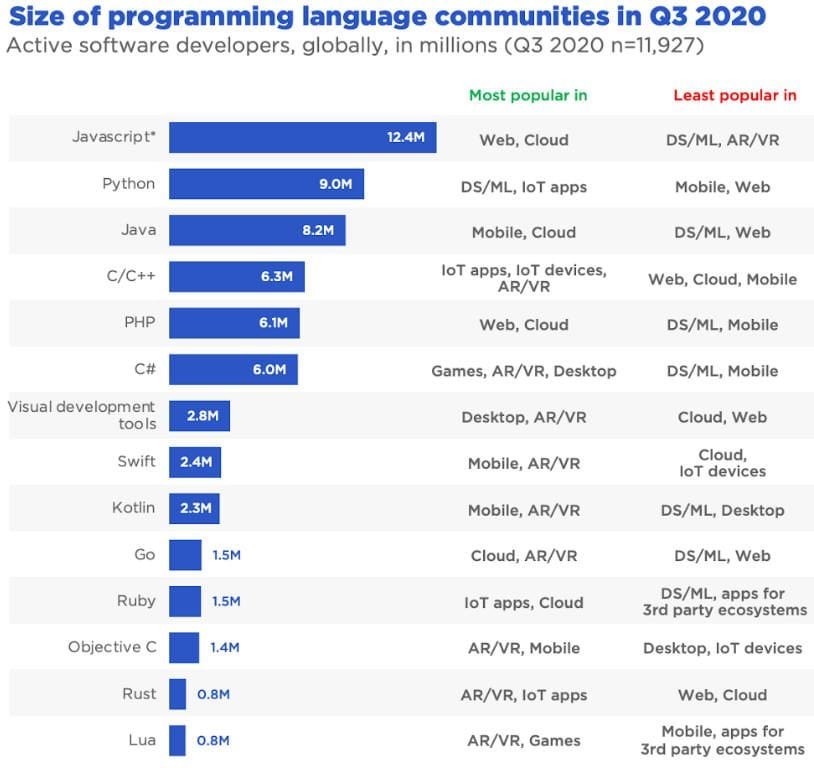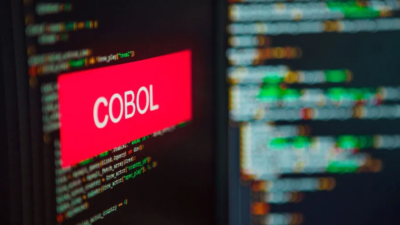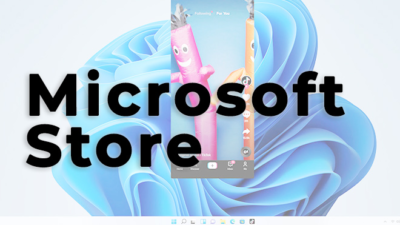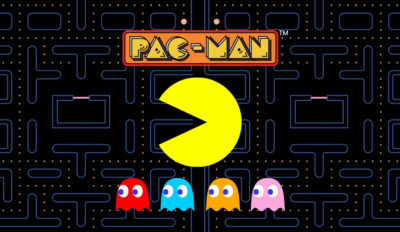Fastest Growing Programming Languages 2024: JavaScript And Python Leads

JavaScript is the most popular programming language among developers followed by Python and then Java, according to analyst firm SlashData’s latest survey of developers. However, in terms of adding new developers within the last year, Python leads with 2.2 million developers. Python can be classed as the fastest-growing programming language in 2024.
The company’s State of the Developer Nation Q3 2020 survey includes responses from more than 17,000 developers in 159 countries, covering the most popular programming languages, developer attitudes to open-source software, adoption of DevOps practices, and usage of popular cloud technologies, such as containers and orchestration tools like Kubernetes.
According to SlashData, JavaScript, which includes CoffeeScript and Microsoft’s TypeScript in the survey, is by far the most popular language, with 12.4 million developers reportedly using it worldwide.
It estimates five million developers have joined the JavaScript community since 2017, consolidating its position as the world’s most popular programming language.
“Even in software sectors where JavaScript is least popular, like data science or AR/VR, over a fifth of developers use it in their projects,” SlashData notes.
Despite weaknesses in web, mobile and desktop app development, Python has gained 2.2 million net new developers over the past year thanks to machine learning, data science and IoT app – or anything without a user interface.
Peter Wang, CEO of Anaconda, the maker of the Anaconda Python distribution for data science, told ZDNet in a recent interview it was “kind of a miracle that Python is even on the radar, much less ranked in the top three languages”, given its low adoption for mobile and application development.
“On the web, the frontend is always JavaScript or a derivative. And on mobile, Python is barely used at all,” he noted.
Nonetheless, Python’s developer population now stands at an estimated nine million users – or roughly 800,000 more than the estimated 8.2 million Java developers.
Python’s popularity overtook Java at the beginning of 2020, according to SlashData. This observation is consistent with several programming language popularity rankings.
Developer analyst RedMonk’s observed the switch in its June 2020 ranking, while Java hit an “all-time low” in Tiobe’s October 2020 popularity rankings and looks set to be overtaken by Python for second place. JavaScript and Python were also more popular than Java in Stack Overflow’s 2020 developer survey.
But Oracle argues that 25-year-old Java is still hugely popular, used by over 69% of full-time developers worldwide with 51 billion active Java Virtual Machines (JVMs) deployed globally. And SlashData notes that the Java community gained 1.6 million developers since mid-2017, despite not growing in the past six months.
Languages with developers numbering between six million and 6.3 million include C and C++, PHP, and C#. In the next group of languages with between 2.3 million and 2.8 million developers are Google-endorsed Android app-development language Kotlin and Apple’s Swift. Swift overtook Kotlin in early 2020, according to SlashData.

Meanwhile, Go, Ruby, Objective C, Rust and Lua have developer user bases numbering between 0.8 million and 1.5 million.
The numbers are based on SlashData’s mid-2020 estimate of 21.3 million active software developers in the world.
According to SlashData, 60% of backend developers use containers, making it the most popular cloud technology, ahead of the 45% using database-as-a-service from the likes of AWS, Oracle, IBM, Google, and MongoDB.
Around 57% of backend developers who are using a containerized application orchestration tool choose Kubernetes.
Interestingly for DevOps adoption, SlashData found that 35% of developers don’t consider themselves to be engaged in the area, yet 40% of respondents say they practice continuous integration (CI) and 37% say they use continuous delivery or deployment (CD) – both being fundamental aspects of DevOps.
However, SlashData reckons the “full automation of the software release process – and therefore true commitment to the DevOps culture – is far from a reality”.
“While more than half (52%) of developers use CI or CD to streamline parts of their workflow, only 25% use both practices to automate all steps between integrating code changes into a central repository through to production deployment,” it notes. “As it turns out, developers are still skeptical about fully automated CI/CD pipelines. This is evident by the fact that nearly 40% of them manually give the green light for code deployments to be promoted to production.”
Research Snipers is currently covering all technology news including Google, Apple, Android, Xiaomi, Huawei, Samsung News, and More. Research Snipers has decade of experience in breaking technology news, covering latest trends in tech news, and recent developments.











